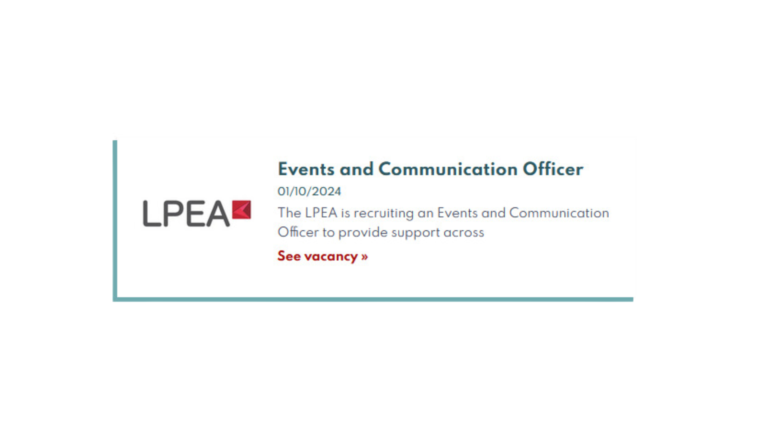By Stéphane Ries, Board Member of LPEA, Managing Director, Financial Intermediaries, Quintet Private Bank Luxembourg as featured in Insight Out Magazine #25
At first glance, private equity firms and nonprofit organizations seem like extremely strange bedfellows.Among the general public, PE firms are widely seen as “barbarians at the gate,” coldhearted capitalists focused on maximizing profitability no matter the social consequences. Nonprofits, by comparison, are perceived in diametrically opposite terms: benign do-gooders that strive to help those who cannot help themselves, with no expectation of any financial return.
Look closer, however, and you’ll see that private equity and nonprofits have a surprising amount in common.
For starters, both are multibillion-dollar activities. US private equity firms, for example, raised $340 billion in capital in 2021. Americans gave $500 billion to charity in the same year.
Both employ millions of people, directly and indirectly, and both use vehicles to collect money from institutions and individuals, especially HNWIs. The populations tapped by both PE firms and nonprofits typically give serious consideration to governance factors, including use of funds, prior to allocating capital.
Both review many opportunities – the deal flow, if you will – before selecting the projects in which they ultimately invest. And both seek a return on those investments, even if one seeks financial ROI and the other a return that is purely social.
Redefining private equity return on investment
“To prosper over time, every company must not only deliver financial performance, but also show how it makes a positive contribution to society,” BlackRock CEO Larry Fink wrote in his 2018 annual letter to CEOs. “Companies must benefit all of their stakeholders, including shareholders, employees, customers, and the communities in which they operate.”
BlackRock runs a $40 billion private equity arm but is of course not a pure PE player. Nevertheless, and no matter what you think about the sincerity of some of Fink’s claims, when the world’s largest asset manager tells business leaders they need to contribute to society, that’s guaranteed to make global headlines.
Fink’s 2018 promotion of a stakeholder-centric approach to investing was not by any means new. By then, it was already conventional wisdom that smart business decisions could not be made by focusing exclusively on shareholder value with no regard for environmental, social and governance factors.
Venture philanthropy
If investment decision-making is changing, so is the approach to charitable activity.
Consider, for example, the rise of so-called “venture philanthropy,” which applies the principles of venture capital to achieve charitable objectives. Unlike impact investing – which aims to generate social or environmental benefits on top of financial gains – venture philanthropy isn’t concerned with financial ROI. Instead, it differs from a traditional nonprofit through the high degree of investor oversight and engagement and, critically, its VC-style approach to catalyzing growth.
Or take the example of New Profit, a philanthropic fund supported by Bain Capital and backed by professionals from that and other PE firms. New Profit provides social entrepreneurs with funding and strategic consulting services, just as a traditional PE firm would with any target investment.
Redefining nonprofit return on investment
Today’s private equity firms increasingly consider ESG factors when calculating ROI. In parallel, an increasing number of nonprofits are taking a more performance-driven, PE-style approach to evaluating the return on the investments they make.
Historically, nonprofits provided audited financial statements that showed the amount of funds received, the amount dispersed and the amount allocated to administration. That kind of information is helpful but does not tell a potential donor anything about the organization’s effectiveness. This is now changing.
The Bill & Melinda Gates Foundation, the world’s largest nonprofit, has an entire department focused on evaluating the impact of its grants. “Evaluation is a high priority when program outcomes are difficult to observe and knowledge is lacking about how best to achieve results,” the Foundation explains, noting that “evaluation is a low priority when the results of our efforts are easily observable.”
This may sound like common sense, but nonprofits have historically lacked the kind of rigorous evaluation frameworks that are so essential to a successful PE firm. That’s of course partly the case because social good is frequently so hard to measure – especially compared to calculating an internal rate of return.
Towards a common foundation?
Over time, private equity firms and nonprofit organizations can continue to learn from one another – and, each in their own way, contribute to strengthening the social fabric.
Already, there are significant PE capital flows to countless charitable causes and foundations; ESG factors will also continue to influence how and where PE firms invest. And while it’s hard to see nonprofits turning to leveraged buyouts, they can apply PE-style strategies to advance the common good.
Investing in local organizations, becoming involved in management, delivering coaching and training, and then continuously evaluating outcomes. That’s the foundation of private equity. Someday, it may be the foundation of nonprofit organizations too.




